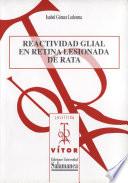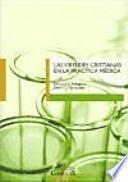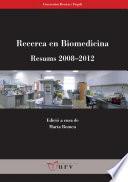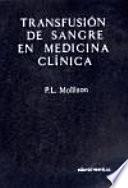Reactividad glial en retina lesionada de rata
Sinopsis del Libro

El glutamato monosódico (GMS) produce una lesión en la retina de rata neonatal descrita en la literatura, pero no existe concordancia en cuanto a la evolución de la lesión a largo plazo. Nos planteamos si tras la lesión neurotóxica producida por GMS subcutáneo en retina de rata neonatal, las células supervivientes tienen capacidad proliferativa para reparar el daño causado. En la retina de rata adulta queremos determinar el momento de la maduración de la barrera hematorretiniana interna (BHRI), analizar el tipo de lesión retiniana producida tras GMS y agonistas de sus receptores [N-metil-D-aspartato (NMDA) y kainato] vía intravítrea, caracterizar la respuesta de la macroglía y microglia, y determinar si existe proliferación celular para regenerar la lesión. Se realizaron técnicas inmunohistoquímicas, y posteriormente estudio y fotografiado de los cortes. Las conclusiones del estudio son: 1/ En ratas neonatales no podemos constatar el proceso de regeneración, 2/ La BHRI está bien establecida a los 10 días de edad. 3/ Tanto el GMS, como sus análogos NMDA y kainato vía intravítrea, lesionan la retina de la rata adulta, sobretodo las capas internas, y más severamente tras kainato. Se produce una activación y proliferación de la microglia, más evidente tras kainato, y se activan las células de Müller con un aumento en la inmunorreactividad para la glutamina sintetasa. Además se evidencia astrocitosis tras GMS y kainato, y no tras NMDA. 4/ En animales adultos tampoco se va a poder constatar el proceso de regeneración. ----------------- Monosodium glutamate (MSG) administered to neonatal rats causes a retinal lesion described in literature. There is no agreement in long term evolution of the injury. We ask if after the neurotoxic retina injury due to MSG, the surviving cells have capacity to proliferate and repairing the damage that were caused in neonatal retina rats. In adult retina rats, we want to determinate the moment of internal blood- retinal barrier (IBRB) maturation, to describe the type of the retinal lesion caused after intravitreal MSG, N-methyl-D-aspartate (NMDA) and kainate, to characterise the response of macroglia and microglia, and to determinate if there is cell proliferation for repairing the damage tissue. Immunhistochemical techniques were made, and the histological sections subsequently were photographed. The conclusions of the study are: 1/ In neonatal rats we cannot prove the process of regeneration; 2/ The IBRB is well established at 10 days old; 3/ Intravitreal MSG, kainate and NMDA causes a retinal lesion, especially in inner layers. Kainate causes more severe injury. We observe activation and proliferations of microglial cells, (with kainate is more striking), activation of Müller cells with increase of glutamine synthetasa inmunoreactivity. We differentiate also astrocytosis after MSG and kainate, nor NMDA. 4/ In adult rats we neither can prove the process of regeneration.
Ficha del Libro
Total de páginas 222
Autor:
- Isabel GÓmez Ledesma
Categoría:
Formatos Disponibles:
MOBI, EPUB, PDF
Descargar Libro
Valoración
3.9
15 Valoraciones Totales







